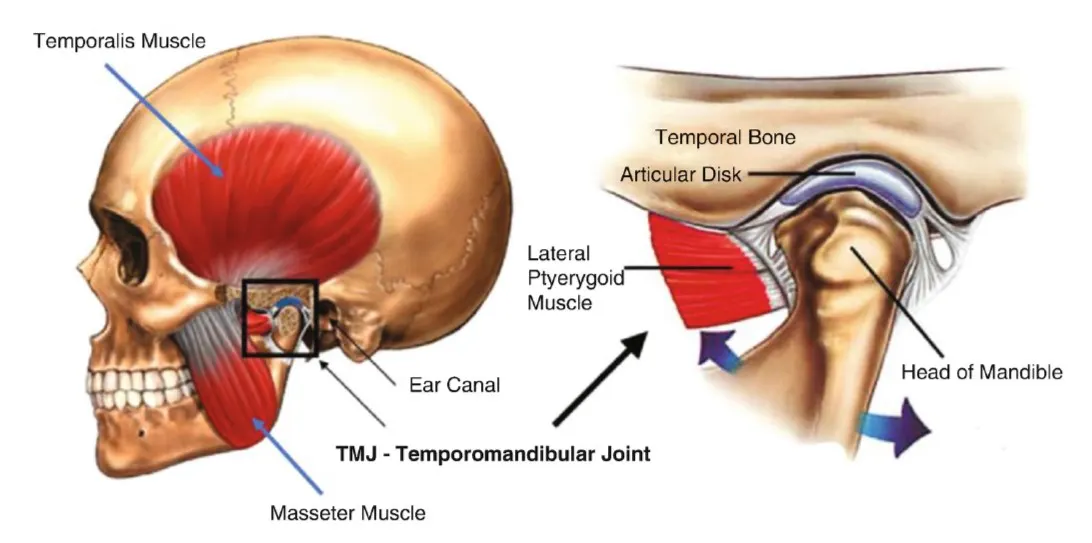Dry needling, an innovative and increasingly popular therapy, offers a promising solution for those suffering from temporomandibular joint (TMJ) disorders. This blog post delves into the essence of dry needling, its application for TMJ conditions, and what patients can expect during and after treatment.
Understanding TMJ Disorders
The temporomandibular joint (TMJ) acts as a sliding hinge, connecting your jawbone to your skull. Disorders of this joint can cause pain in your jaw joint and in the muscles that control jaw movement.
The temporomandibular joint (TMJ) and associated muscles
Symptoms often include pain or tenderness in the jaw, aching pain in and around your ear, difficulty chewing, and locking of the joint, making it difficult to open or close your mouth.
What is Dry Needling?
We have discussed Dry Needling in previous posts, but let’s do a quick review. Dry needling is a physical therapy technique used to treat muscle pain and dysfunction. It involves the insertion of a thin, sterile needle into the skin and muscle directly at a myofascial trigger point. Despite its similarity to acupuncture in the use of needles, dry needling is based on modern Western medical principles. It targets muscular tension, knots, and trigger points that are contributing to pain and functional limitations.
Dry Needling for TMJ Disorders
Dry needling can be particularly effective for TMJ disorders by targeting muscles involved in jaw movement. The muscles of mastication, such as the masseter, temporalis, and pterygoid muscles, can often become tight or dysfunctional due to TMJ disorders, leading to pain and restricted movement.
The Procedure
A qualified physical therapist, trained in dry needling, will first assess your condition to identify trigger points contributing to your TMJ dysfunction. The therapist will then insert a thin needle into these points. The insertion of the needle can lead to a "twitch response" from the muscle, which is a desirable therapeutic reaction indicating the release of muscle tension and pain relief.
What to Expect
During the procedure, patients may experience a twitch response and a brief period of discomfort as the needle is inserted. Post-treatment, there might be some muscle soreness similar to that experienced after a vigorous workout, but this typically subsides within a day or two. Many patients report immediate relief from their TMJ symptoms, including reduced pain and improved jaw movement.
Benefits of Dry Needling for TMJ
Pain Relief: By releasing trigger points, dry needling can significantly reduce jaw pain and discomfort.
Improved Mobility: Treatment can lead to an improvement in jaw movement and function.
Reduced Tension: It can help relax the muscles of mastication, reducing overall tension and discomfort.
Complementary Therapy: Dry needling can be an effective complement to other TMJ treatments, such as physical therapy exercises, massage, and medication
For those suffering from TMJ disorders, dry needling presents a promising treatment option. By targeting specific trigger points within the muscles of mastication, it can offer significant pain relief and improved jaw function. If you would like to explore whether physical therapy and dry needling can help with your jaw pain, schedule your consult today with the link below and get started on the path to recovery.



